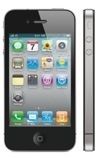According to International Data Corporation (IDC), mobile phone recycling is amazingly low today, with rates of 10% considered good. The research group spoke with the vendors directly, physically inspected the packaging, devices, and accessories of mobile phone manufacturers, and leveraged published corporate responsibility reports and other corporate and product environmental reports as available.
IDC (http://www.idc.com) also reviewed other third-party rating and watchdog sites such as ENERGY STAR and Greenpeace. To better understand where the mobile industry stands on sustainability, IDC used five criteria (packaging, materials, energy, end-of-life program, and overall sustainability efforts) and 20 sub-criteria to create a green ranking of 10 key mobile device manufacturers. The top five mobile device manufacturers in terms of their sustainability policies and practices are (in alphabetical order): Apple, LG, Nokia, Samsung, and Sony Ericsson.
According to IDC, Apple recycles in 95% of the countries where its products are sold, including the United States, India, China, Hong Kong, Malaysia, Singapore, New Zealand, Korea, and Australia. Apple has been a leader in influencing its supply chain and has taken strong steps as a key advocate for others to develop green technologies. This goes up to the executive level, where CEO Steve Jobs is very active in the company’s green efforts.
IDC says LG has made strides in its power management, including the development of a solar charger, and seeks to continue to deploy such solutions throughout its entire line of products. LG has reduced the standby power within its mobile chargers, and handsets have a charger reminder that beeps when the handset is fully charged.
Nokia is particularly strong in the area of materials where between 65% and 80% of any Nokia device can be recycled and the rest, primarily plastics, can be used to fuel the recycling process, says IDC. The company has also gone the furthest in its use of recycled materials.
IDC says Samsung scored well in its reduction of hazardous materials; for example, all new model phones were free of BFRs by Jan. 1, 2009, and free of PVCs by July 1, 2009. Samsung has set dates of Dec. 31, 2012, for making mobile phones free of phthalates, beryllium, brominated compounds, and antimony trioxide.
Sony Ericsson has optimized packaging to be more environmentally friendly by including recycling mailers and developing lighter boxes saving 80% on CO2 emissions from transport versus the standard box, according to IDC. Sony Ericsson completely replaced paper manuals with electronic manuals and saved 350 tons of paper on 1 million phones, equaling 13,000 trees and 7,500 cubic meters of water.

